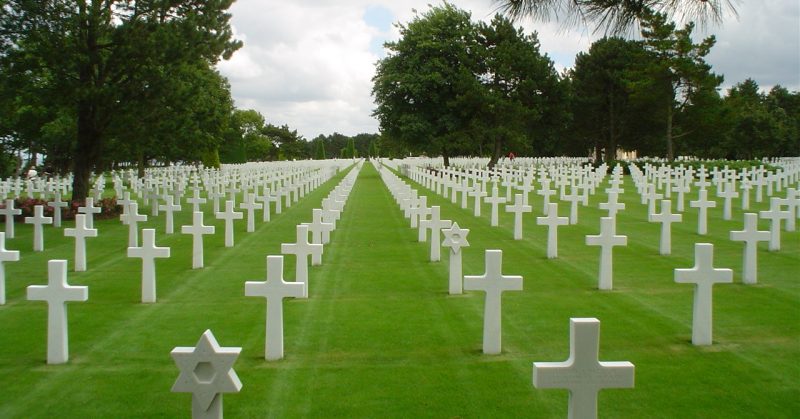Each year, Mark McKay teaches about World War II in his history class at Floyd Central High School. He finds that war to be an interesting one where the line between good and bad was clearly delineated. “There’s very little division on World War II,” he said, comparing it to other wars that have divided our country.
But instead of requiring history students to study the battles and names commonly associated with the war, he has them research individual service members that died in the war.
Because the war is so huge, involving many tens of millions, including 60 million that were killed, he tries to get his students to focus on the individuals so that that they see how real people were individually affected. The intent is to make the war more personal for the students who learn what a soldier did before the war, what he wanted to do with his life, if he was married, etc. Then they are killed in the war, and all of that is gone.
This is something he’s done for the past five years in his class. Students have given presentations on twenty-four different soldiers.
This year, his class concentrated on soldiers from Floyd County. A total of 78 men from the county died in the war. It is possible that some of the men knew each other before joining the military.
As an example, Jack E. Dyer and Fred W. Penn graduated from New Albany High School in 1937. They died about one month apart in 1944.
Emily Cain chose to study Lewis Richard Anderson, who graduated from New Albany in 1936.
He received his business degree from Indiana University before he joined the military when he was 26 years old.
Cain said that Anderson was involved in ROTC and wanted to serve in the war. He fought and was buried in France. He had been married to his wife for about a year before he went off to fight. They had a child but he never got to see her.
Landon Campbell chose not to research someone from Floyd County. Instead, he did his project on his great uncle, Robert W. Taylor, from Stinesville, Indiana.
Campbell said that he was unaware that anyone in his family had fought in the war. He was able to learn quite a bit about who Taylor was.
Campbell learned that Taylor didn’t get along at home and that the war was a way out for him. He joined as soon as he turned 18. He died in Pfalz, Germany in late 1944.
Knowing that someone in his family sacrificed for his country is something that Campbell is proud of.
Campbell has learned that you get information about the war when you research individuals that you might miss if you just watch the major documentaries. He said that the war was so long ago that a lot of things don’t get discussed anymore. Once you dig into someone’s life, you find facts you wouldn’t learn otherwise.
Cain agreed. He said that focusing on the main players in the war takes away from the sacrifices made by others. The war gets romanticized, and a lot of the ugly things get left out. It’s not just about Patton, Eisenhower, and Churchill. Everybody was involved.
Cain is happy to see his students so involved in their projects. He said that it adds another dimension to the history of the war. He expressed his hope that the projects are as meaningful to the students as they are to him. He thinks that our expressions of gratitude for the sacrifices made by soldiers don’t mean as much until you start focusing on individual sacrifices, News and Tribune reported.
You can read about the soldiers researched by the class in recent years here.
